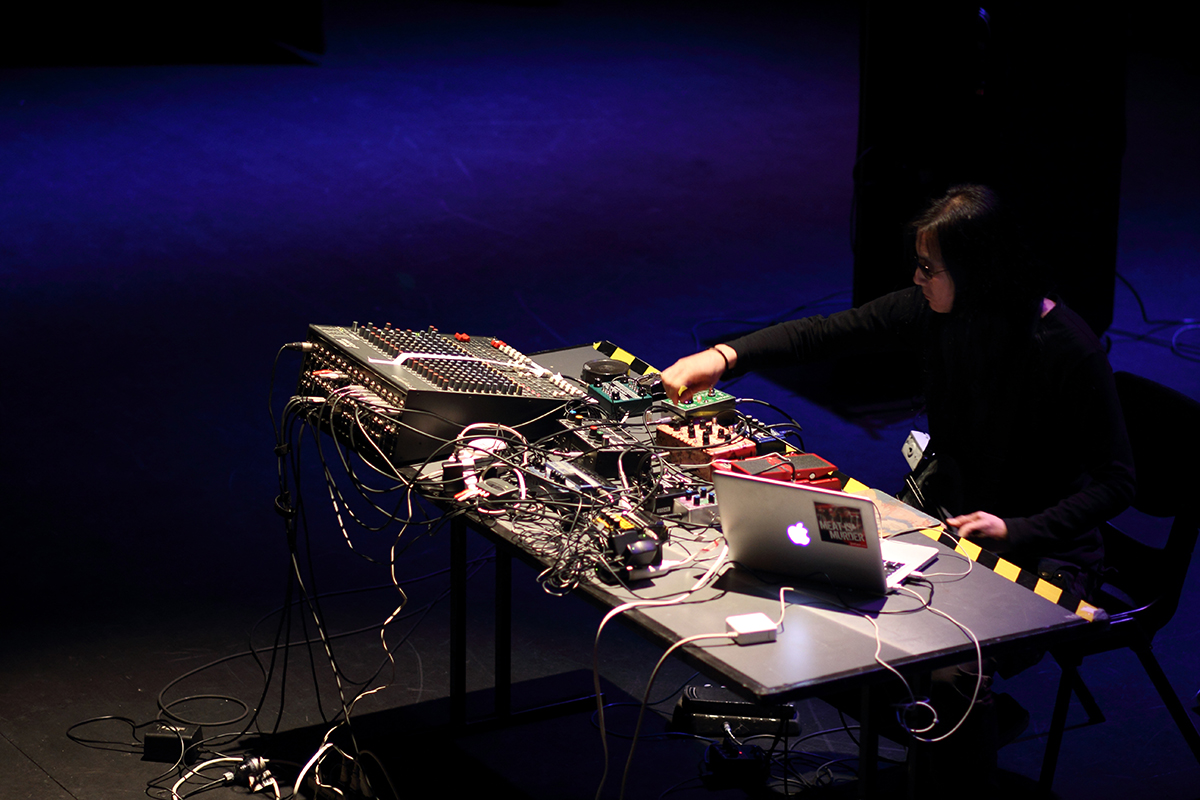
Notes from the sound underground
One of the hardest things to pull off when performing live experimental music is a dramatic hard stop, so I offer my last piece of writing for RealTime as a long slow fade…
Naive states
When RealTime started in 1994 I was a budding performance artist, passionate about all things corporeal, the performing body in all its fleshiness and transgression. I didn’t take much note of the articles about sound in those early years; however, I felt the same tinge of guilt as others who would feel compelled to confess to Keith and Virginia in theatre foyers, “Thanks for the latest edition. I’m sorry I haven’t read all of it yet!”
Somewhere between 1994 and 2001 I underwent a conversion of sorts, gradually bowing my body out of performance and replacing it with the visceral invisibility of sound. I hadn’t written much for RealTime at this stage, contributing a few pieces to the coverage of 1998 and 2000 Adelaide Festivals where I subbed in an all-hands-on-deck affair. The first piece I wrote in 1998 was about the Australian Art Orchestra’s Into the Fire, which aptly describes my experience. It felt terribly presumptuous to critique Paul Grabowsky and the Sruthi Laya Ensemble, so I opted for description and anecdote, equating cacophony and noise with childlike naughtiness — dear me, I’m sorry. In the early 2000s the experimental electronic music and sound scene was gathering momentum. Caleb Kelly (then caleb.k) had been contributing reviews on events such as the reasonably established yet forever renegade What is Music? festival and some other Sydney gigs and conferences; but as he was actively involved as curator there was scope for a new contributor. I’d always felt like I couldn’t review performance in Sydney because I was too amicably embedded in it. But as I was transitioning from a performance to a sound-based practice, Keith suggested that I might try writing about some of these sound events.
The wonderful thing about RealTime was that it was okay to learn on the job. While not an excuse for ignorance, this position offers an ideal phenomenological opportunity, the experience of being ‘bracketed,’ as they say, from encultured assumptions, dealing with what you are given as it is given. In her 2010 book Listening to Sound and Silence: Towards a Philosophy of Sound Art, Salomé Voegelin suggests that a listening experience is not “a receptive mode but a method of exploration…What I hear is discovered, not received.” This describes my first forays into reviewing the experimental audio scene. I was discovering this practice piece by piece, gig by gig. I’d like to think that this opened up the activities to a wider readership who were invited to stumble with me into this dimly lit but gloriously sonorous world.
Of course, I was not devoid of all assumptions. My review of Static Museum, curated by Garry Bradbury at Artspace in 2001, “Boys, toys and pleasing noise” (RT45), opened with the oft-heard gripe around the lack of performativity of laptoppery — though I stressed that this was not the case with this event, a point I’ve since come to care little about as long as the sound itself performs. I also concluded with a complaint about the absence of female artists, framed by a personal, techno-reactionary position that I was someone with no inclination to explore sound from a ‘scientific’ perspective. While the issue of gender still hasn’t gone away (the reason for starting my online directory of female artists working with sound, Audible Women), I wish I had framed that argument with less arrogance and more nuance about the interplay of aesthetics and technology.
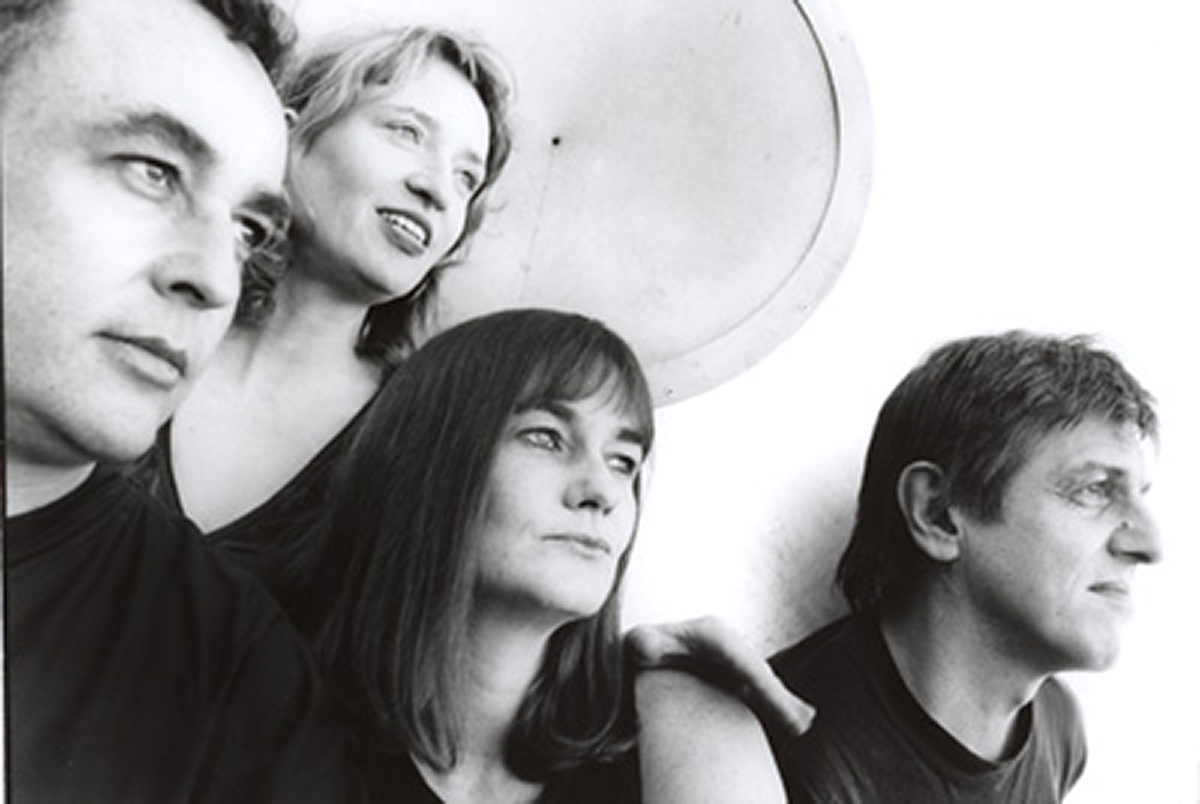
Machine for Making Sense, 2002, photo courtesy the artists
Early epiphanies
As an emerging sound artist with no formal education in this mode, writing for RealTime offered the best education. Beyond my own creative adventures, it allowed me to find my way into sonic art through writing, discovering the pleasures, pains and complexities of experimental audio as it manifested in seminal gigs and events such as the What is Music? festival (RT51), the Machine for Making Sense (you can listen to the Writers Read RealTime version of my review here), Electrofringe (of which I later became a co-director, RT52) and impermanent.audio, curated by Caleb Kelly. My review (RT50) of the latter serves as a kind of turning point in my appreciation of experimental music practice, evidencing when I begin to let go of a performance mindset and start to understand the poetry of sonic processes:
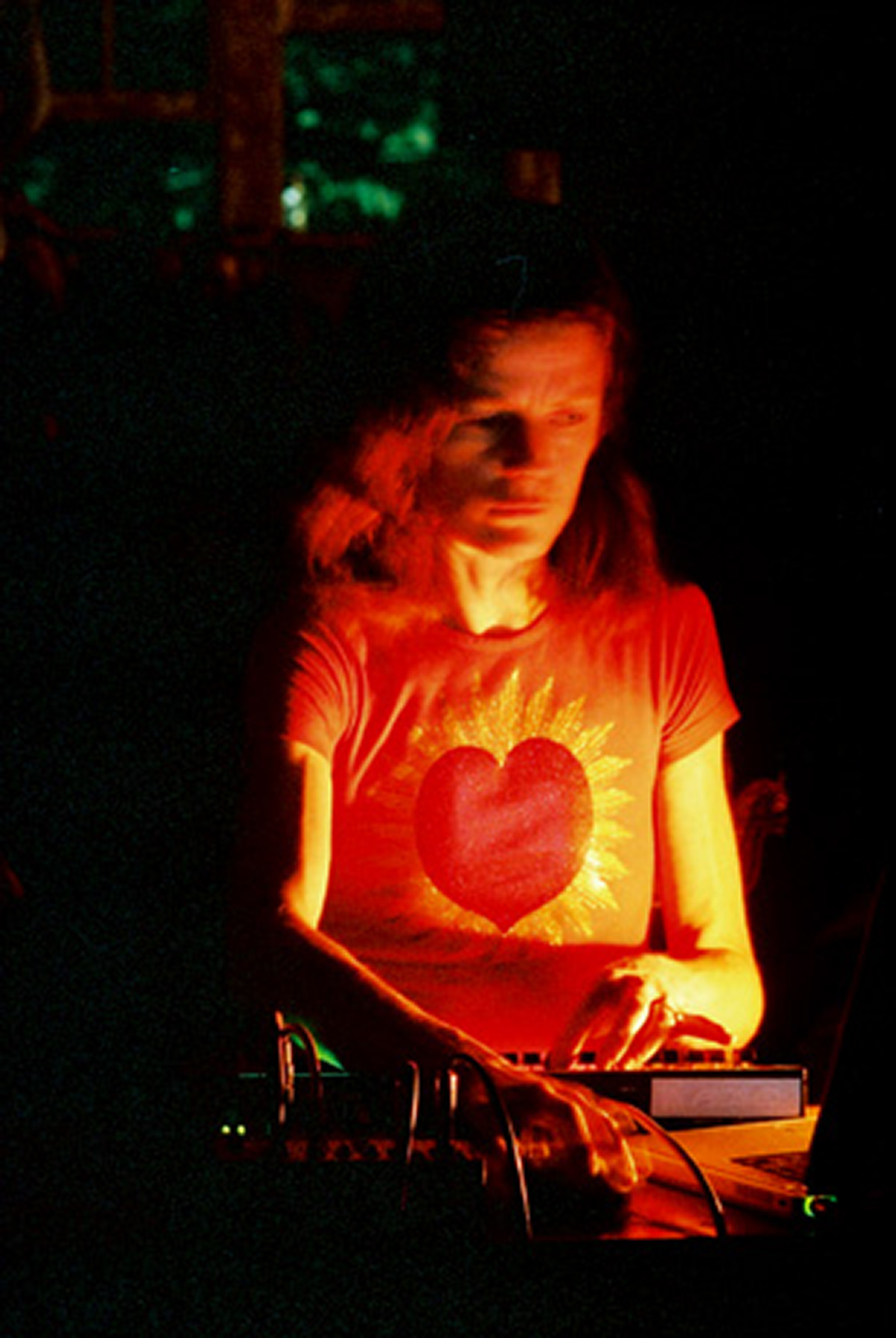
Kaffe Matthews, impermanent.audio, 2002, photo mr snow
“I see the electric transmission beaming out into the ether and [Kaffe] Matthews catching the loops in a digital butterfly net. I get a real sense of the structure of her improvisation — sending the sound out there, and then plucking it back, remolding it, sending it out again. She has a light touch, mixing only a few chosen elements, teasing them out, dropping them. All her butterflies beautifully controlled and musically combined create an intense and rewarding sonic vision.” Like her sound, I too was captured in the butterfly net of sonic possibilities.
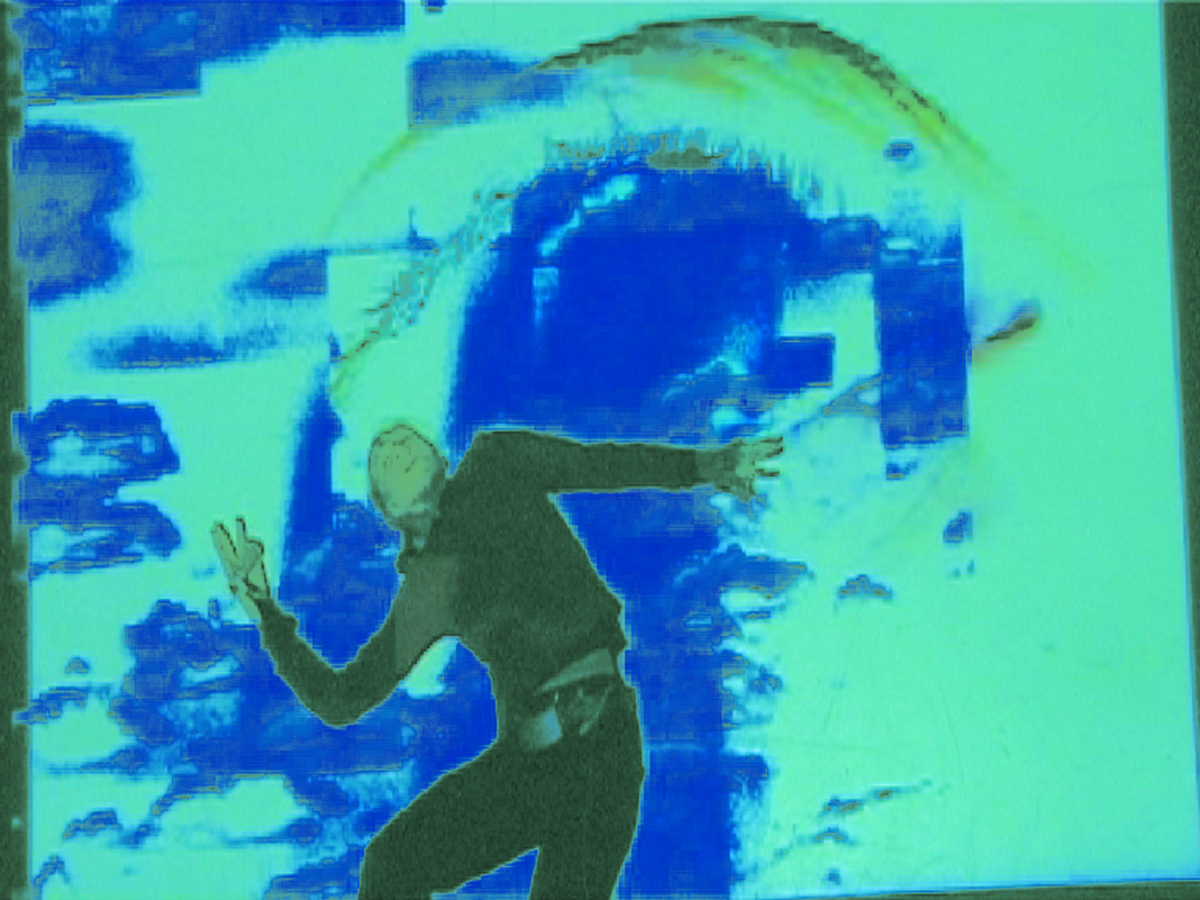
Lindsay Vickery, your sky is filled with billboards of the sky, image courtesy the artist
Networked learning
Of course, it wasn’t just Sydney that was developing a vibrant scene and the opportunity to attend interstate festivals and do larger overviews allowed me, and hopefully RealTime readers, a sense of the activities and the artists practising around Australia. A piece commissioned for New Media Scan (RT51) provided one of the most challenging writing experiences, requiring me to quickly come up to speed with the rapidly shifting technological developments influencing sonic art practices. The article features an overview of Ros Bandt’s excellent book Sound Sculpture (1999) as well as works by Nigel Helyer, Joyce Hinterding, Camilla Hannan and Phillip Samartzis; sound and screen intersections in the works of Andrée Greenwell, Lindsay Vickery, Tesseract Research Laboratories and Wade Marynowsky; pure audio events such as impermanent.audio, Small Black Box and fabrique in Brisbane; and the individual practices of artists Jasmine Guffond, Greg Jenkins, Garry Bradbury and Julian Knowles. It concludes with discussion of new modes of distribution, featuring excited millennial talk about the potential of DVDs to distribute 5.1 surround sound and the new possibilities of MP3 downloads. Having always said that my strength as a writer is in description, rather than argument I was surprised to see that I made an attempt at the latter, quoting Heidegger no less:
“When I commenced the research for this article, I unwittingly set up a determinism/voluntarism polarity which, as with most dichotomies, has proven itself too inflexible to be of value. The reality is that people will continue to hunt for their sonic substances in the areas that are available to them, some old, some new. Perhaps it is best to approach new media with Heidegger’s view of technology — “not as a tool or machine, but rather a process, a dynamic of ‘revealing’.” The older media supply the foundations for the new and the new creates perceptual shifts and ways of reconfiguring the old. And the loop goes on…”
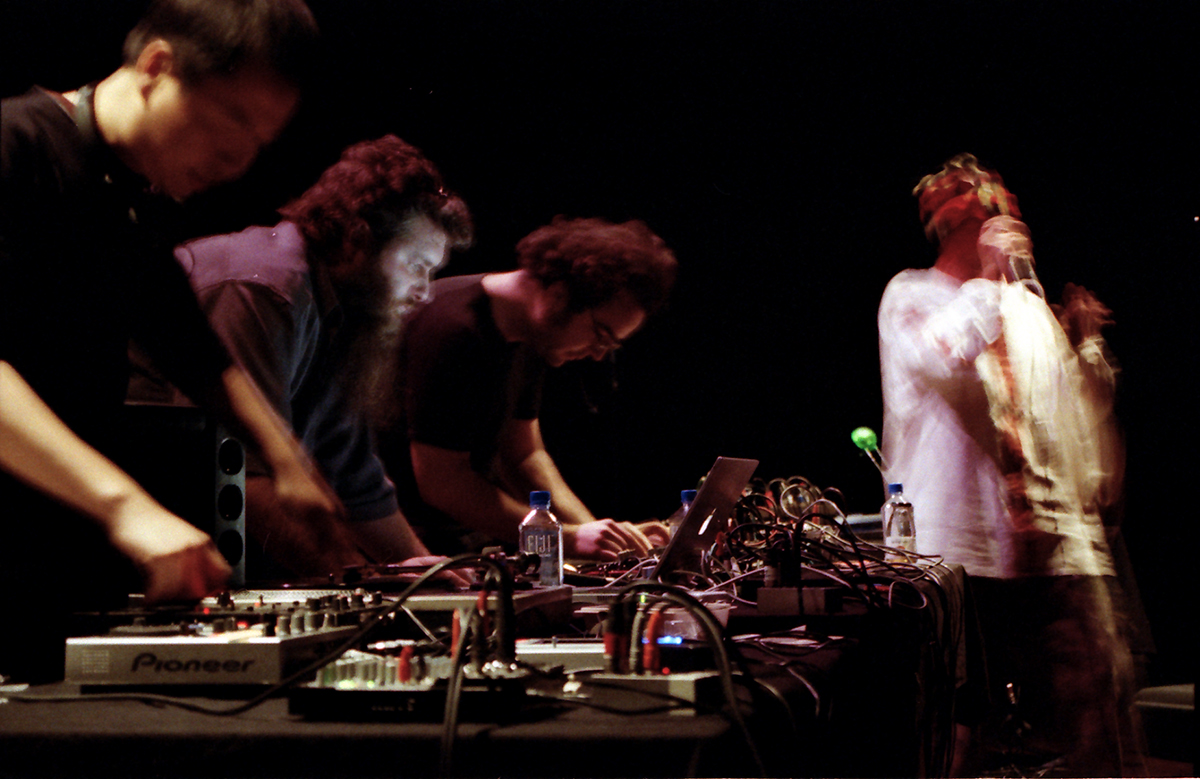
Beta Erko, Liquid Architecture 6, 2005, photo courtesy the artist
Over the next 15 years I voraciously consumed local events and national festivals, the following offering a small selection of personal highlights: my first experience of the NOW now festival in 2003 (RT53); sampling Liquid Architecture 2005 in both Sydney and Melbourne (RT68); the epic REV festival at the Brisbane Powerhouse (RT online); Meredith Monk at Queensland Biennial Festival of Music (RT58); Merzbow and Oren Ambarchi in The Aurora Festival in Western Sydney (RT109); the genre collisions of MONA FOMA 2014 in Hobart (RT119); and experiencing Christina Kubisch’s work, among other sonic wonders, at both Transmediale 2005, Germany (RT60) and Ars Electronica 2010, Austria (RT100).
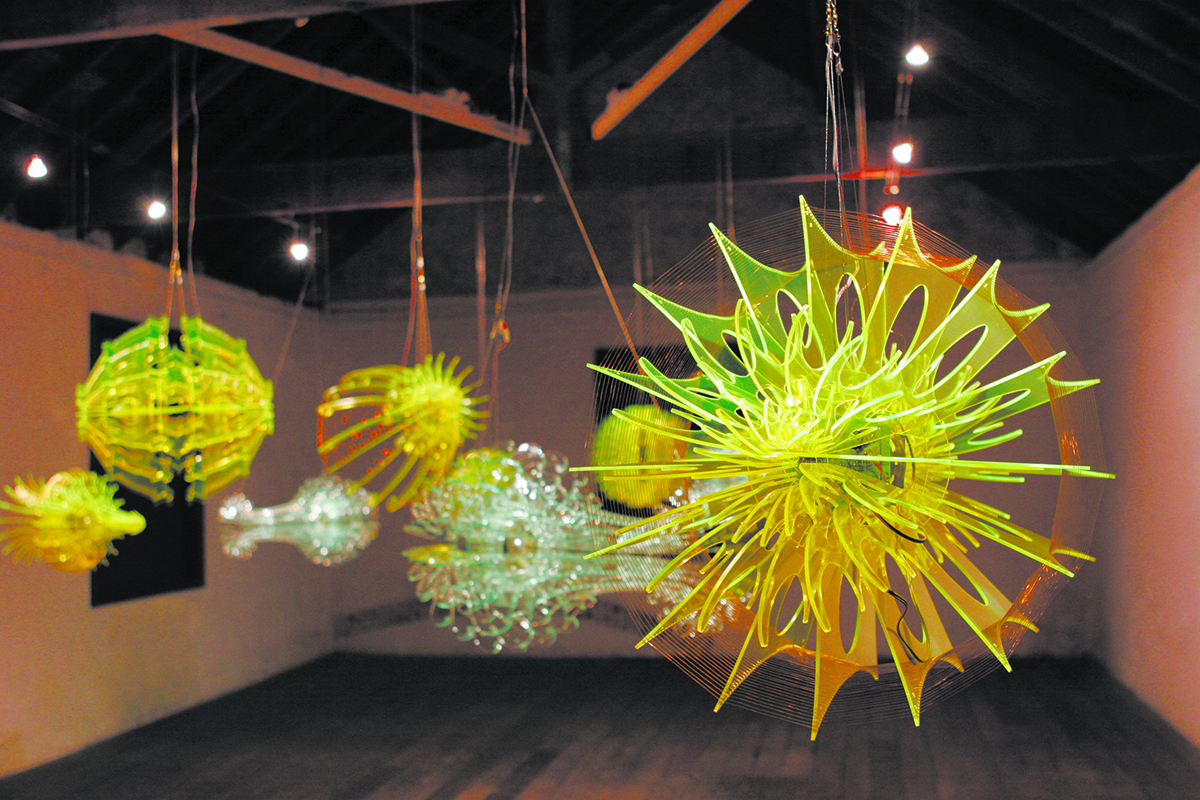
Quint de Loupe, Nigel Helyer, photo courtesy Totally Huge New Music Festival
If I had to pick a favourite article I’d nominate my coverage of Tura’s 2005 Totally Huge New Music Festival in Perth, titled “Totally Huge: knots and flames” (RT70). I used William Blake’s poem The Tyger as an extended literary reference with which to draw together the ambitious sound art exhibition, You are here…entangle (curated by Kylie Ligertwood, featuring works by Nigel Helyer, Cat Hope, Kieran Stewart, Alan Lamb, Rob Muir and Hannah Clemen at the highly atmospheric Moores’ Building, Fremantle) with the ritual catharsis of Annea Lockwood’s Burning Piano:
“Annea Lockwood (NZ/UK), renowned for her ‘piano transplants’…provided a very public face for the festival by installing a baby grand on Bathers Beach in Fremantle. The piano in fact went missing, only to be found a few days later at a local backpackers where they were trying to repair it! Lockwood also provided the highlight of the festival, recreating her Burning Piano performance. Despite the chattering crowd gathered in a paddock ready for a bonfire it was a beautiful meditative event, as the tongues of flame burning rainbow colours penetrated the instrument, skittering across the keys faster than fingers have ever managed, eating away at the backboard so that we could see through the body, until the unavoidable total collapse. A worthwhile sacrifice for art.”
From the horse’s mouth
As well as reviewing, or offering commentary as I prefer to say, there was also the joy and terror of interviewing artists. ‘Terror’ because I was always intimidated by the prospect that my lack of formative sound art education would make a fool of me. However getting directly acquainted with artists’ ideas made the terror more than worthwhile, and it was an honour to be able to commune with great minds, many through interviews including some for RealTime TV; to name a few: Robin Fox, Cat Hope, Lawrence English, Marina Rosenfeld, Pia van Gelder, Kusum Normoyle, Ben Frost, Michaela Davies, Matt Warren, Garth Paine, Eugene Eughetti, Sarah Last and more.
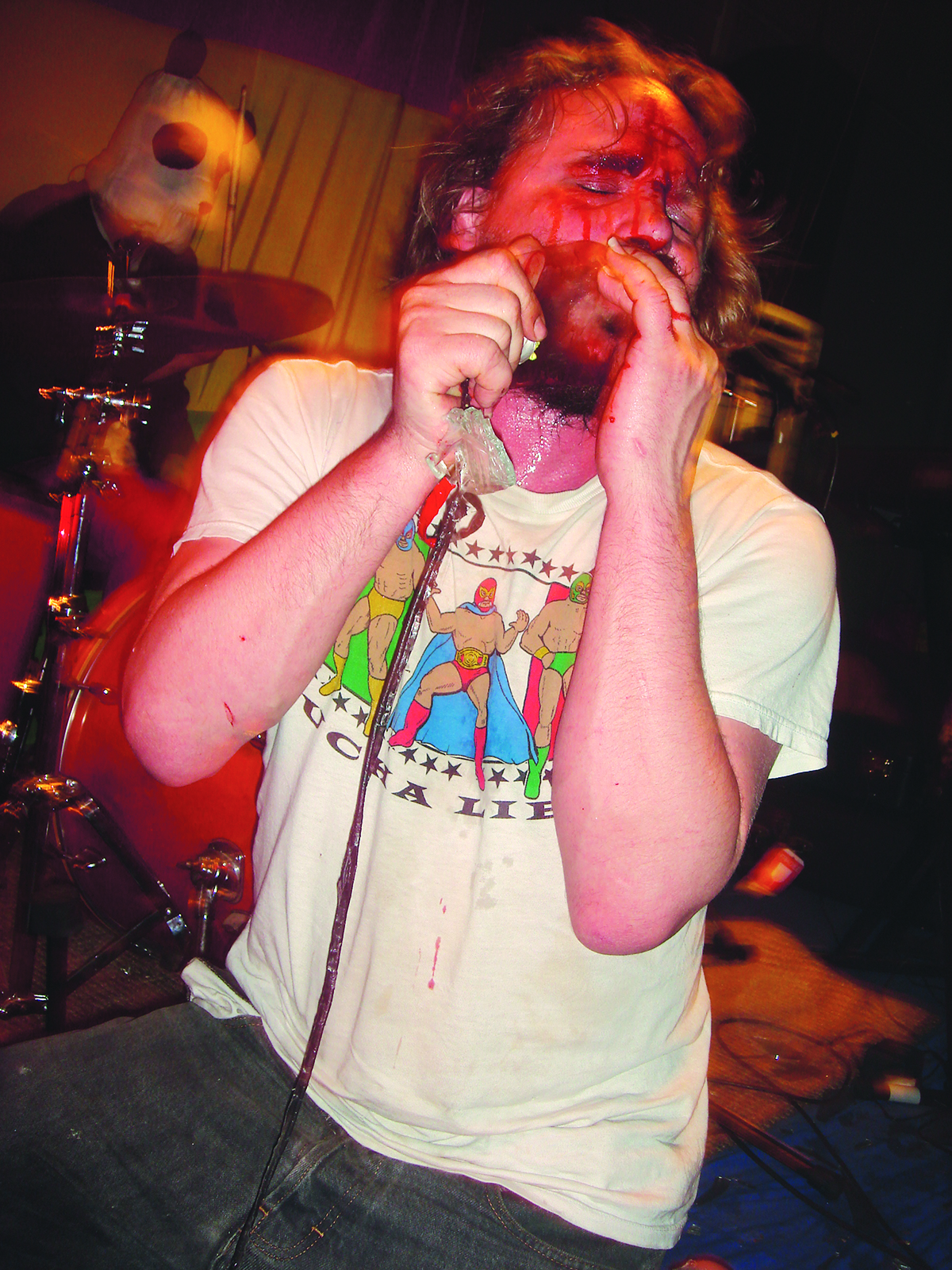
Lucas Abela, Rice Corpse, tour of China, November 2008, photo courtesy the artist
A notable interview highlight (RT92) was a co-authored affair with former RealTime Assistant Editor Dan Edwards, then our ‘man in China,’ who interviewed improvising musicians Yang Yang and Li Zenghui in Beijing, while I interviewed broken-glass noise virtuoso Lucas Abela in Sydney, about the three artists’ collaborative outfit Rice Corps. The article’s title was particularly special, “that was shit!,” reflecting the literal translation of the Chinese character for the band name doubling as shit. However I could pretty much hang up my interviewer hat and die happy after I was given the opportunity to talk to my all-time inspiration, Laurie Anderson, in the lead up to her appearances at the 2013 Adelaide Festival. To this day, I have never been as nervous as I was dialling her phone number. I thought I would have trouble trying not to babble hysterically over the top of her measured and thoughtful responses describing her upcoming collaboration with the Kronos Quartet; but in fact I found myself uttering few words, so read Ms Anderson’s (I was also obsessed as to whether or not I could possibly call her Laurie) in RT 112.
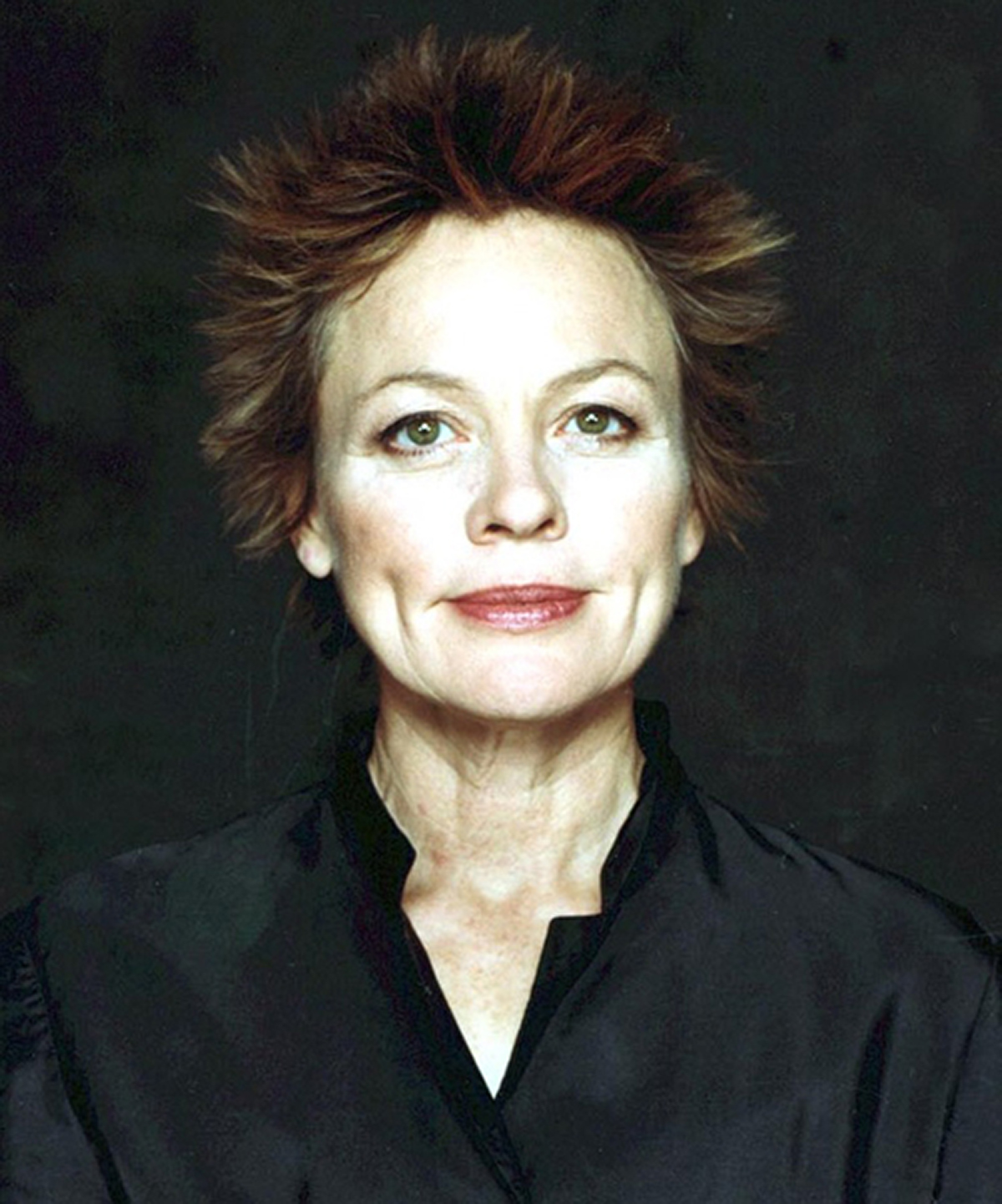
Laurie Anderson, photo courtesy the artist
The past before my past
While dwelling mostly on the distant past of my writing for RealTime, it’s important to acknowledge that there was a past before this. Leading up to the recent RealTime in real time event at Performance Space’s Liveworks, I read many of the sound articles from those early editions, those ones I passed over at the time. Articles, such as Tony MacGregor’s account of Sound Culture Japan ’93 and Australian Sound Art Meridian Kobe (1993) (RT1, p20) and Annemarie Jonson’s 1994 preview of Sydney’s Sound Studio — curated by Alessio Cavallaro at Performance Space — and Melbourne’s Earwitness (RT 3) — curated by Sonia Leber as part of Modern Image Makers Collective/Contemporary Music Events Company (later to become Experimenta) — reveal a thriving sound culture with exhibitions and events of scale such as the ambitious and contentious Sounds in Space (RT8, p13) at the MCA curated by the late Rebecca Coyle (1995).
Sound installation and sculpture were the predominant forms discussed, along with what was then a thriving radiophonic culture centred on ABC programs Surface Tension, The Listening Room and Radio Eye, driven by producers and creators such as Tony MacGregor, Kay Mortley, Virginia Madsen, Roz Cheney, Jane Ulman, Brent Clough, Sherre DeLys, Sophea Lerner and RT’s own Keith and Virginia. There was also the Contemporary Sound Arts group lead by Alessio Cavallaro, Shaun Davies and Annemarie Jonson publishing the Essays in Sound series — Cavallaro and Jonson not soon after taking on the mantle of editors for RealTime’s OnScreen section. While there is some mention of more experimental electronic music practice with Machine for Making Sense and Jon Rose appearing quite frequently, it is the live performance of sonic art (appearing as something not quite like new music/contemporary classical) that seems to come more to the fore in editions from the late 1990s/early 2000s, the era in which I enter.
Sonic art in three movements
Across the pages of RealTime, I see sonic art having three, not distinct, but certainly recognisable phases. The first until around 1999, summarised above, is focused on sound within gallery culture, radio art and emerging collaborations with screen media. In this way it was engaged with institutions and organisations. The second stage is from around 1999 when the live sector strengthens, made possible by the development of more portable equipment and digital audio accessibility. With roots in post-punk art rock it is a decidedly DIY scene, taking place in illegal warehouse venues and inappropriately reverberant artist-run spaces, occasionally making guest appearances in the institutions that had previously housed the aforementioned mid-1990s sound art events. That said, What is Music? made incursions into the Sydney Opera House in 2002 while still keeping it real with concerts in underground venues (see above) — that’s how curators Oren Ambarchi and Robbie Avenaim roll. Interestingly this was also the heyday of ‘new media art;’ many sound-oriented installations and interactive works actually moved over to be considered within this context (see the sound section of RT’s Media Art Archive).
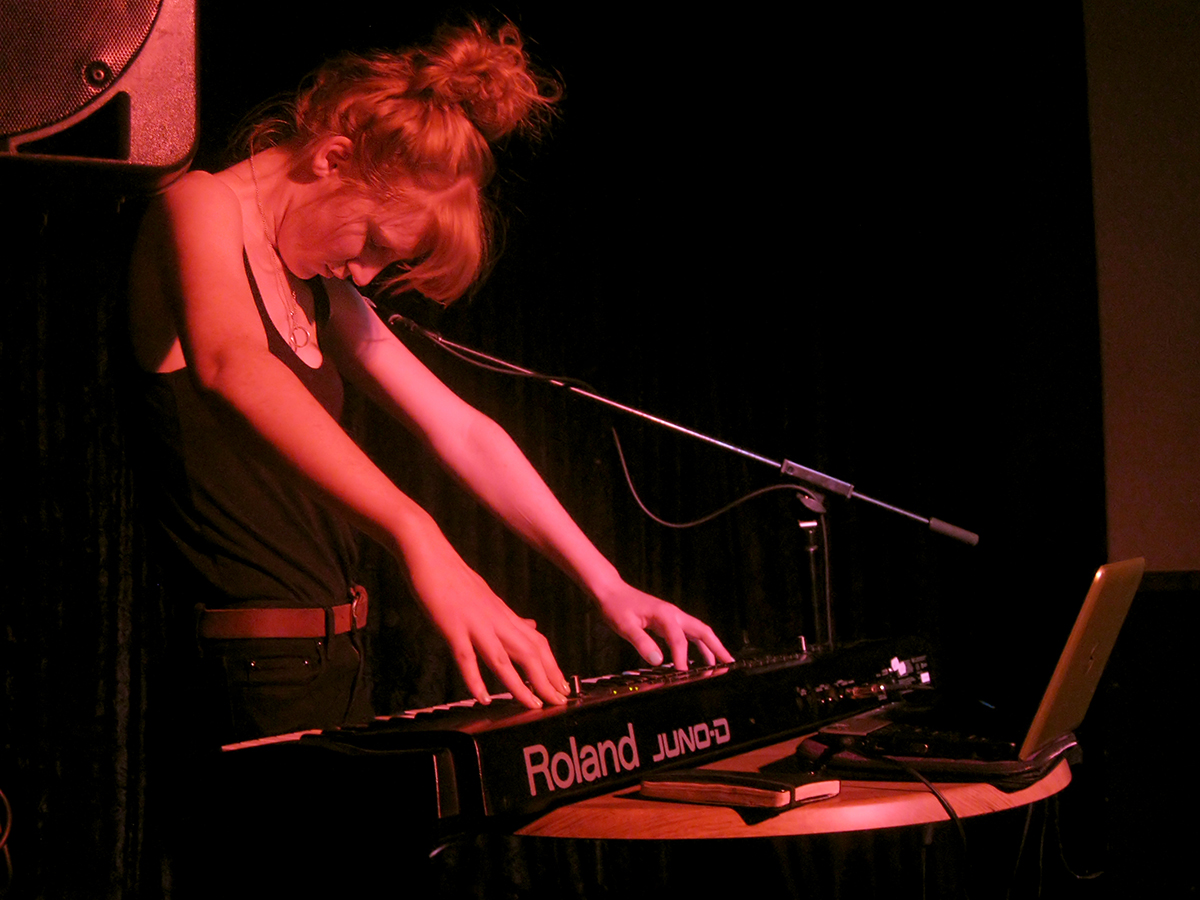
Daisy Buchanan, Ladyz in Noyze, photo courtesy the artist
Within this live scene there have been ongoing waves of activity, the occasional lull making us nostalgic for the early 2000s. From the Sydney perspective alone, as late as 2011 there were enough events for a three-part overview series (RT103, RT104, RT105), admittedly some on their last legs. But today (Nov 20, 2018) I noticed that Sydney offers at least one event a night this week, if not two, for those interested in the pointy end of experimental practice.
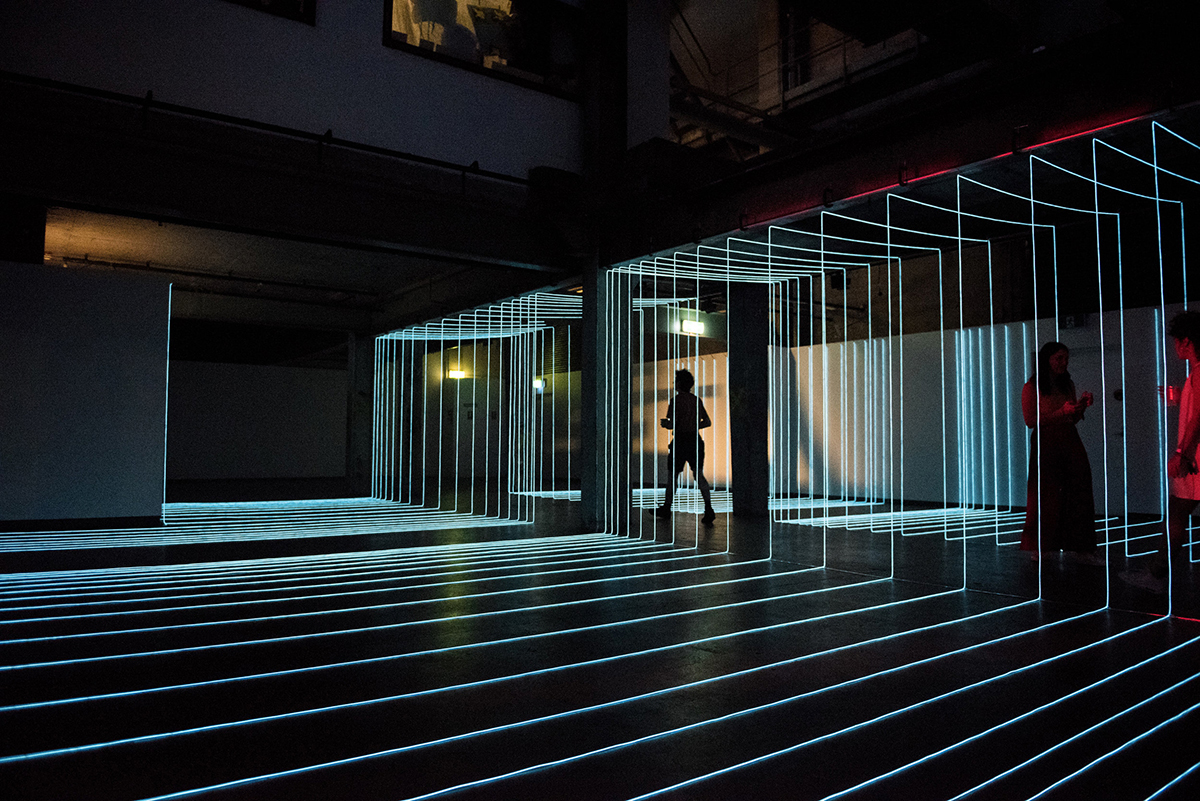
Meagan Streader installation for Soft Centre, Casula Powerhouse Theatre, photo courtesy the artist
We are now in what I suggest is a third phase, one in which the boundaries between new music/contemporary classical and the experimental electronic scene have blurred. This has long been the case in Perth for example, where a smaller population and genre-fluid artists like Cat Hope ensured a certain kind of slippage. In Sydney it has occurred as younger electronic music-literate artists have emerged from more traditional music schools, not just from art schools, and contemporary music ensembles such as Ensemble Offspring have actively pursued all manner of collaborations and genre experiments. Perhaps it has also occurred as funding sources have become scarcer and the new music scene has started to adopt a more DIY approach. However it has come about, the live experimental music scene has continued to grow, and even spread to outer suburbs with programs at Western Sydney Arts centres like those in Campbelltown, Blacktown, Bankstown and the latest ambitious adventures at Casula Powerhouse with the Soft Centre festival (18, Oct 2017).
All this is to say that RealTime’s coverage, above and beyond my contribution, offers an inevitably incomplete, yet amazingly varied account of sonic art which, although I have focused on the live side here, also encompasses gallery-based sound art and media art. (For a rousing definitional debate see Nigel Helyer’s provocation in RT70 and Ben Byrne’s response in RT72). It is hard to imagine how we will be able to get a sense of upcoming developments without RealTime, an incredible source of documentation and commentary. There will be blogs (or is that already over too?), there will be Tweets and Facebook rants (if people can take time out from signing petitions for every other horrible thing going on in the world), but we will keenly feel the loss of that special space where not just the sonic arts, but all the innovative arts in Australia could be reflected on in depth and, equally importantly, be celebrated.
–
Top image credit: Merzbow performs at Riverside Theatres, Parramatta, Aurora Festival of Living Music, 2012, photo Matthew McGuigan






